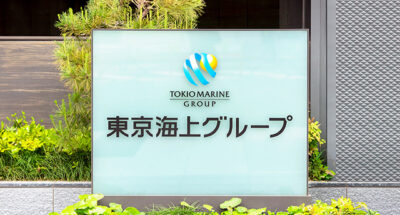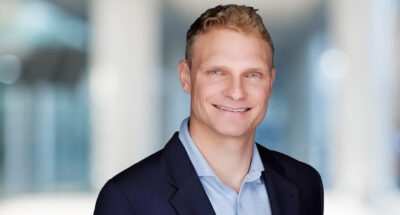
How elixir of longevity will alter life as we know it
Aging is now seen as a modifiable biological process. Longevity science is reshaping healthcare, careers, and society for longer, healthier lives....
Audio available

by Richard Roi Published April 25, 2025 in Talent • 9 min read
Unilever kicked off 2025 with a major announcement. To accelerate their ambitious turnaround plans, the consumer goods behemoth would be appointing a new CEO. Taking over at the helm and replacing outgoing chief executive Hein Schumacher was former CFO Fernando Fernandez.
A Unilever veteran of more than 30 years, Fernandez had led a number of high-performing businesses and geographies, including beauty and wellness, one of the organization’s fastest-growing divisions. Welcoming him into the role of CEO, Unilever chair Ian Meakins had this to say:
“The board has been impressed with Fernando’s decisive and results-oriented approach and his ability to drive change at speed. He has a strong track record of performance and portfolio management, a love of brands, and a profound knowledge of Unilever’s operations.
Having worked with Fernando closely over the last 14 months, the Board is very confident in his ability to lead a high-performing management team and deliver the shareholder value that the company’s potential demands.”
Fernandez’s rise through the ranks to the top job at Unilever is by no means an everyday story of talent progression, but it just might be representative of a broader shift – one that has quietly built momentum over the last decade or so. Globally and across a diversity of sectors, we are seeing a move away from the practice of external recruitment, or buying in strategic talent from outside the organization, in favor of building or developing that talent in-house. Organizations of every size and hue are increasingly and systematically promoting internal talent to more senior jobs. One report by LinkedIn suggests that internal mobility has risen globally by 30% since 2021. This number rises to more than 50% for directors and senior executives.
I believe there are some good reasons for this. One is the employee value proposition.

Retaining talented people is one of the biggest challenges facing organizations today. In 2024, the US Bureau of Labor reported that the average employee tenure had dropped to 3.6 years, while a 2025 Randstad survey finds that 56% of workers are considering a career change, and 27% are actively seeking new roles.
Keeping high potential talent in the organization is much easier when those skilled employees can see a future for themselves; when they can see the moves and pathways and opportunities in situ to grow, scale, and develop, perhaps even to the C-suite. If your senior executive talent is consistently coming into the organization from outside, the harder it will be for talented people on the inside to muster the drive and motivation to progress with you.
Then there’s cultural fit. Turnover for senior executives coming into a new organization remains surprisingly high – as much as 70% – and although it’s not uncommon for internally promoted CEOs to fail (and we’ll come to that presently), incoming chief executives frequently struggle to fit into a corporate culture where they lack alignment with its goals and values. Take J.C. Penney.
The US department store giant took a risk when it hired Apple’s retail chief Ron Johnson to lead an aggressive strategy overhaul in 2011. Johnson had been credited with transforming Apple’s retail footprint from a “boring computer sales floor” into a “sleek playroom,” and his appointment as CEO was cheered by investors, with stock prices soaring 17%. Just 16 months later, however, J.C. Penney’s sales had slumped by around 25% – a function, some believed, of Johnson’s decision to ditch J.C. Penney’s longstanding coupons strategy in favor of “everyday low prices.” Johnson was summarily sacked as CEO and his predecessor – Mike Ullman, a JC Penney veteran – was reinstated to urgently revive the beleaguered retailer.
Here’s how The New York Times characterized the debacle:
“From the moment Ronald B. Johnson arrived at the Plano, Tex., headquarters of J. C. Penney, some there believed he would not last long. On Monday, the doubters were proved right. After a tumultuous 17 months as chief executive of Penney, Mr. Johnson was pushed out.
He blew into Plano a star, a man who helped build the juggernaut Apple Stores. But his Silicon Valley ways – evident from a showy party in early 2012 that he threw to celebrate himself and his plans, replete with a light show, fake snow, and flowing liquor – jangled from the start.”
These are expensive mistakes for organizations to make. Because the costs of buying in top talent can significantly outweigh building and promoting that talent internally – in money, time, and productivity. Hiring externally comes with a high price tag that will typically involve recruitment costs and fees, travel expenses, and compensation packages designed to attract top talent. The latter can be as much as 20% higher than salaries offered to existing employees promoted to similar positions, according to a study by Wharton. The same study finds that workers promoted into jobs have significantly better performance for the first two years than workers hired into similar jobs and lower rates of voluntary and involuntary exit. Why? When you appoint someone from inside the organization, you are betting on someone who understands your culture, values, systems, operations, and processes; someone who knows the ropes and is better equipped to run with the job and add value quickly. To paraphrase Unilever’s Ian Meakins, when you hire from within, you are betting on a known, tried-and-tested quantity.
Now, none of this is to say that hiring top talent from within is foolproof. The failure rate for new CEOS remains high even when candidates are sourced internally. And again, there are solid reasons why this happens.
Similarly, in many businesses, succession planning and leadership development processes are decoupled. And this is a mistake.
Building a robust internal leadership pipeline takes a serious investment in time, effort, and inevitably, financial outlay. All too often, organizations delay their succession planning efforts until they are actively facing transition or transformation challenges, by which time it may well be too late to leverage a well-prepared, strong, and diverse talent pool – one with the training, experience, exposure, and capabilities to navigate the bumpy road ahead (or the chaos caused by a sudden departure.)
Similarly, in many businesses, succession planning and leadership development processes are decoupled. And this is a mistake.
Let’s say an organization has its act together on succession planning – its leadership assessments and pipeline metrics in place, say, and an established talent committee chaired by senior company leaders. At the same time, it has invested in best-in-class executive education programs to accelerate leadership capabilities in areas of the business that are important to its growth, resilience, and future competitiveness. Sounds great. However, if these two processes are not well integrated and aligned, the same organization is missing out on critical synergies that will help build a robust leadership talent pool for its immediate, ongoing, and future needs.
When organizations fail to see succession management and leadership development through the same lens, they typically end up in an infinite loop of replacement planning: the same high-potential candidates crop up again and again in succession discussions—leaders rising linearly perhaps, through the ranks of specific functions or geographies—but there has been no systematic movement of these high-value talents into key, strategic positions; positions that would give them the range and depth of exposure necessary for the most senior echelons of leadership.
So how do you build talent effectively, such that you meet the capabilities and requirements of your organization today while servicing the succession needs it will have tomorrow?

Building future-ready talent that can simultaneously service your strategic capabilities and objectives while populating your succession pool hinges, I believe, on doing four essential things – steps that effectively integrate succession planning and broader leadership development.
Start by articulating your talent strategy: the leadership and organizational capabilities that your organization needs to meet its strategic goals. This will help pinpoint the kinds of leaders you will need to unlock new value and drive future success. Map your strategic goals to the organizational capabilities that will deliver those goals. From here, work to identify the specific leadership proficiencies that underscore those organizational capabilities. What will your leaders need to bring to drive, let’s say, innovation, operational agility, customer experience, and digital transformation – whatever your key capability needs are? Who should lead these efforts? This is where you may want to put together or recalibrate your organization’s strategic talent team or committee to steward, govern, and sponsor your progression plan.
Identifying high-potential talent for your leadership pipeline and perhaps the C-suite is contingent on assessing that talent effectively. You need to know whether potential and capabilities match both current and future leadership requirements. Knowing this will help you determine whether you can build that leadership talent in situ, or whether you may need to buy it into the organization. This means identifying a leadership talent assessment solution that services both development and selection needs; one that can be deployed both internally and externally using the same measures and metrics to evaluate candidates’ caliber, leadership qualities, and fit to the role. An additional benefit of using fit-for-purpose assessment tools is that you supply individual candidates with valuable feedback and gain critical insights into their strengths and specific areas for development and progression.
Once you have clearly understood your capabilities and succession objectives and the development needs of your internal talent, you need to enact the right measures and interventions to accelerate their progression so that they meet and, ideally, exceed expectations in their future roles. Developing talent takes commitment, time, and effort. Proven tactics include bespoke programs and coaching to accelerate the role-readiness of internal candidates, as well as purposeful functional or geographic rotation within the organization to build exposure and broaden general management capabilities. We also know that as executives become more senior and take on greater responsibility, they benefit from increasingly personalized development and training. This might mean mentorship and teaching around key management, operational, and personal leadership levers that they will need to hone. As high-potential leaders progress, it is critically important to monitor their development on an annual or biannual basis to ensure that they are on track.
The first 90 days or even 12 months can be fraught with stress as new leaders adapt to their new responsibilities and the expectations of the organization, their line managers, or the board. Easing in during this transition period is helped by things like one-on-one coaching with experts who can help new appointees plan and purposefully calibrate what the business and stakeholders expect. A 360-degree mini-assessment around the six-month mark, verbal or even online, can also provide valuable feedback on integration and behaviors, empowering new leaders to take corrective measures to avoid derailment if necessary and to sustain and drive commitment and motivation.
Change is inevitable and needs will shift and emerge over time. Organizations will always have to build new capabilities to remain competitive, more so than ever in the current volatile climate. And there will be times when specific needs – whether that’s big data, AI, or hyper-personalized services – whatever new directions beckon – will call for talent that may not be immediately available within the organization.
Continuous scanning of the environment for coming change and new challenges will help companies keep track of leadership and succession needs they are going to have to meet – needs that will emerge repeatedly. Being proactive about building the talent to respond to those needs is a critical measure of long-term success and resilience. It’s also, I believe, the right thing to do, by the organization and by its people.
As the great management thinker and teacher Peter Drucker put it: “The purpose of an organization is to enable ordinary human beings to do extraordinary things.”

Accelerate your career with strategic business capabilities and transformative leadership skills.

Affiliate Professor of Leadership and Organization at IMD
Ric Roi is Affiliate Professor of Leadership and Organization at IMD. He is a senior business psychologist and advises boards and CEOs on matters related to board renewal, CEO succession, top team effectiveness and leadership transitions.

December 4, 2025 • by Jennifer Borrer, Saule Serikova in Talent
Aging is now seen as a modifiable biological process. Longevity science is reshaping healthcare, careers, and society for longer, healthier lives....
 Audio available
Audio available
December 2, 2025 • by Patrick Reinmoeller in Talent
Japanese insurance holding company, Tokio Marine Holdings, took a novel, immersive, and “surprising” approach to developing ambidex and aligned future leaders. Here are five talent development lessons they can share with organizations...
 Audio available
Audio available
November 11, 2025 • by Francesca-Giulia Mereu in Talent
Discover how reconnecting with your inner child can boost creativity, resilience, and courage, turning curiosity into professional strengths....

November 4, 2025 • by Susan Goldsworthy in Talent
Oliver Zeidler shares his journey from swimmer to World Champion rower, balancing sport, business, and a beginner’s mindset....
Explore first person business intelligence from top minds curated for a global executive audience